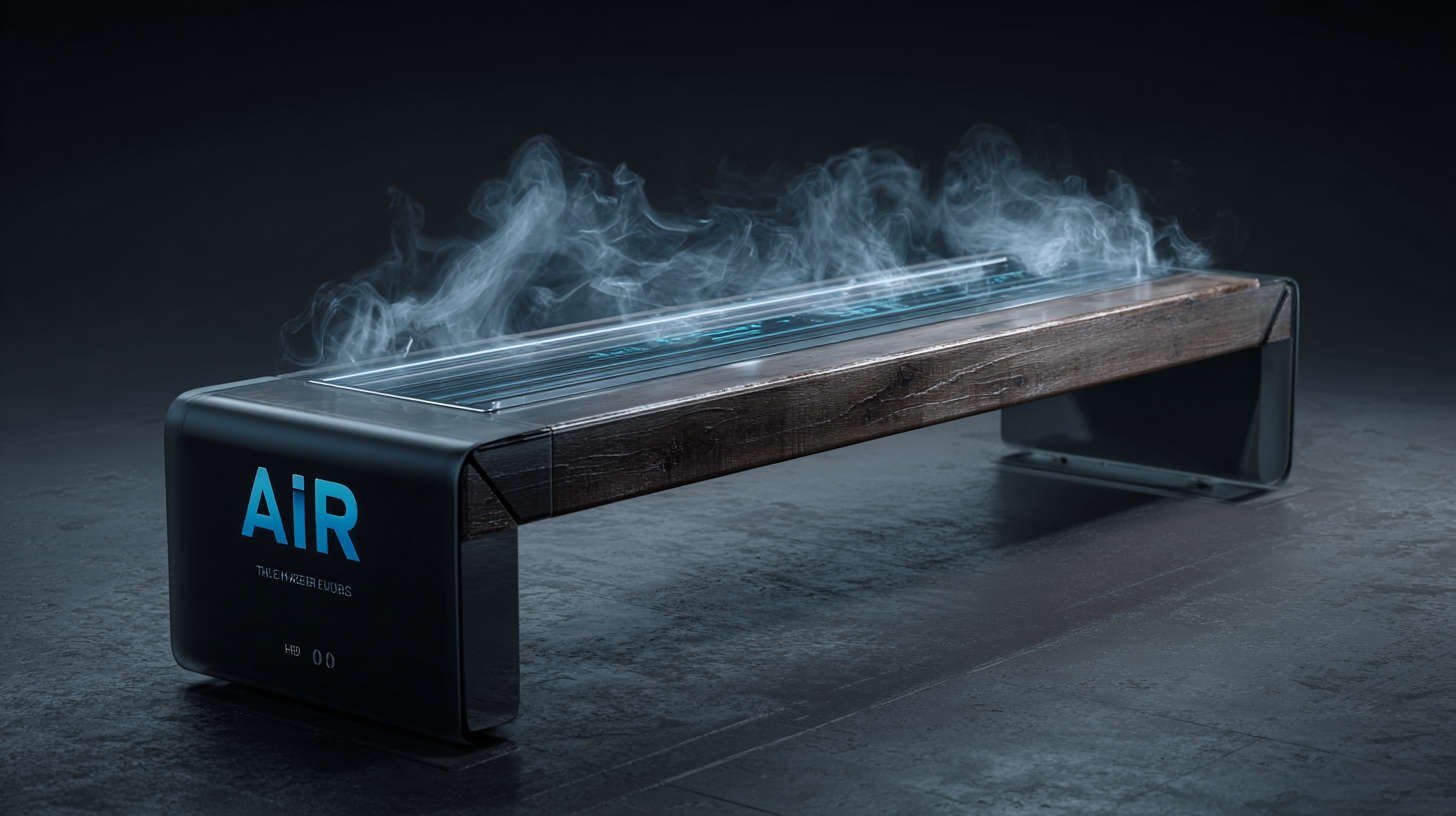
Innovative Trends in Air Bench Technology for 2025 Your Ultimate Guide to the Future
As we approach the year 2025, the landscape of industrial technology continues to evolve, with innovative trends emerging in various sectors. Among these advancements, Air Bench technology stands out, promising significant improvements in efficiency, safety, and sustainability for workplaces across the globe.

This ultimate guide delves into the latest developments and future directions in Air Bench systems, exploring how they enhance air quality, support ergonomic work environments, and reduce the environmental footprint of manufacturing processes.
Whether you're an industry professional looking to stay ahead of the curve or a business owner seeking to optimize operations, understanding these trends in Air Bench technology will be crucial. Join us as we uncover the cutting-edge features and applications that are set to revolutionize the workplace by 2025, ensuring that you are not only well-informed but also prepared to embrace the future of industrial technology.
Emerging Features of Air Bench Technology to Watch in 2025
As we look ahead to 2025, air bench technology is poised for significant advancements that will transform industrial environments. According to a recent report by MarketsandMarkets, the global air filtration market is projected to reach $30 billion by 2025, driven by increasing health and safety regulations in workplace settings. This surge is expected to propel innovations in air bench systems, emphasizing enhanced filtration capabilities and energy efficiency.

As these trends continue to evolve, the air bench technology landscape will likely become synonymous with safety, sustainability, and operational efficiency.
The Role of Sustainability in Future Air Bench Innovations
As we advance towards 2025, the air bench technology landscape is increasingly integrating sustainability into its innovations. Recent industry reports indicate that over 70% of manufacturers are prioritizing eco-friendly materials and energy-efficient designs in their new air bench models. This shift not only addresses environmental concerns but also enhances product durability and functionality. By harnessing renewable materials, companies can reduce their carbon footprint while pushing the boundaries of performance.
**Tip:** When selecting air benches, consider models that utilize recycled materials or those certified by recognized environmental standards. This not only supports sustainability but often leads to better product lifecycle management.
Moreover, advancements in filtration technology are paving the way for cleaner work environments. Reports suggest that modern air benches equipped with advanced HEPA filters can reduce airborne particles by up to 99.97%, significantly improving workplace air quality. This focus on health and safety complements sustainability efforts, presenting a dual benefit to organizations.
**Tip:** Regularly maintain and upgrade filter systems in your air benches to ensure maximum efficiency and effectiveness, allowing you to preserve both employee health and environmental integrity.
Innovative Trends in Air Bench Technology for 2025
Your Ultimate Guide to the Future - The Role of Sustainability in Future Air Bench Innovations
| Trend | Description | Sustainability Impact | Estimated Adoption Year |
|---|---|---|---|
| Advanced Filtration Systems | Utilization of HEPA and ULPA filters to enhance air purity and reduce airborne contaminants. | Improves air quality, reducing health risks and environmental impact. | 2025 |
| Energy-Efficient Designs | Innovative designs that consume less energy while maintaining performance. | Lower energy consumption leads to reduced carbon footprint. | 2024 |
| Smart Air Benches | Integration of IoT for real-time monitoring and control of air quality. | Optimizes operations, resulting in efficient resource use and improved environmental management. | 2025 |
| Biodegradable Materials | Use of eco-friendly, biodegradable materials in the construction of air benches. | Reduces plastic waste and environmental pollution. | 2026 |
| Modular Design | Reconfigurable air bench systems that allow for custom setups and scalability. | Promotes resource efficiency and adaptability to changing needs. | 2025 |
Integration of Smart Technologies in Air Benches
The integration of smart technologies in air benches is set to revolutionize laboratory environments by 2025. As outlined in a recent industry report from ResearchAndMarkets, the global market for smart laboratory equipment is projected to grow at a CAGR of 12.5%, reaching $14.7 billion by 2026. This growth is largely driven by the increasing demand for automation and data connectivity in laboratory operations. Air benches equipped with smart sensors and IoT capabilities will enable real-time monitoring of air quality and particulate levels, ensuring optimal working conditions and enhancing user safety.
Moreover, advancements in machine learning algorithms will facilitate predictive maintenance of air benches, thereby decreasing downtime and operational costs. According to a study by Frost & Sullivan, implementing smart technologies in lab equipment can reduce maintenance expenses by up to 30%. The incorporation of user-friendly interfaces and mobile applications will also empower lab personnel to track performance metrics and receive alerts instantly, ensuring that air quality standards are consistently met under varying operational demands. As laboratories increasingly adopt these smart air benches, they will not only boost productivity but will also pave the way for safer and more efficient research environments.
Innovative Trends in Air Bench Technology for 2025
This chart illustrates the projected integration of smart technologies in air bench systems from 2023 to 2025. The data showcases the increasing percentage of various smart features that are anticipated to be integrated into air bench technology, highlighting the transition towards more automated and efficient systems.
Comparative Analysis: Traditional vs. Advanced Air Bench Systems
As industries evolve, the demand for efficient and advanced air bench systems has become increasingly vital. A comparative analysis between traditional and advanced air bench technologies reveals significant shifts in functionality and application. Traditional air benches often comprise basic containment systems that prioritize cost-effectiveness but may lack the precision and performance required for contemporary needs. In contrast, advanced systems incorporate innovative features such as real-time monitoring, enhanced filtration, and modular designs, allowing for greater versatility across various applications, from research laboratories to industrial settings.

One of the key advantages of advanced air bench systems is their capability to integrate with emerging technologies. With the incorporation of smart sensors and automated controls, these systems can offer improved air quality management, significantly reducing the risk of contamination in sensitive processes. Moreover, the design improvements in advanced models enhance user safety and environmental compliance, making them not just a tool for today, but a critical component in shaping the operational landscape of tomorrow's industries. As we approach 2025, aligning with these innovative trends will be essential for businesses looking to stay ahead of the curve in both efficiency and sustainability.
Key Market Players and Their Contributions to Air Bench Evolution in 2025
In the rapidly advancing world of air bench technology, several key players are driving innovation and transforming the landscape for 2025. Companies like Festool, with their commitment to precision and quality, are enhancing air bench designs to improve ergonomics and user efficiency. Their latest models incorporate advanced filtration systems that not only ensure cleaner environments but also provide maximum comfort for operators, thus elevating workplace safety standards.
Another notable contributor is Bosch, known for integrating smart technology into their air benches. By incorporating IoT features, Bosch enables real-time monitoring and management, allowing users to optimize airflow and adjust settings from their devices. This technological integration not only streamlines operations but also promotes energy efficiency, which is crucial in today's eco-conscious market. Such advancements demonstrate how leading manufacturers are not only focusing on product functionality but also on creating sustainable solutions that address the evolving demands of industries.
